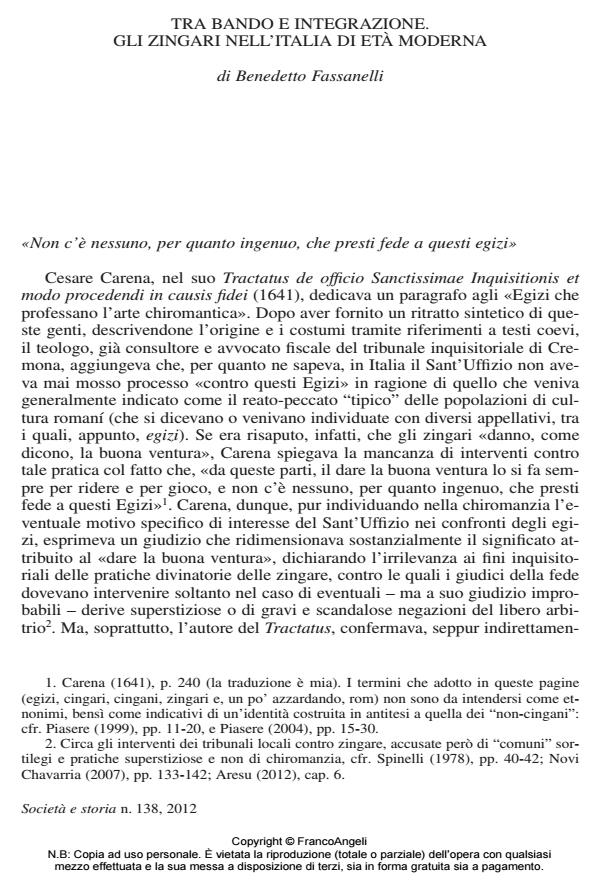Tra bando e integrazione. Gli zingari nell’Italia di età moderna
Titolo Rivista SOCIETÀ E STORIA
Autori/Curatori Benedetto Fassanelli
Anno di pubblicazione 2012 Fascicolo 2012/138
Lingua Italiano Numero pagine 18 P. 751-768 Dimensione file 496 KB
DOI 10.3280/SS2012-138004
Il DOI è il codice a barre della proprietà intellettuale: per saperne di più
clicca qui
Qui sotto puoi vedere in anteprima la prima pagina di questo articolo.
Se questo articolo ti interessa, lo puoi acquistare (e scaricare in formato pdf) seguendo le facili indicazioni per acquistare il download credit. Acquista Download Credits per scaricare questo Articolo in formato PDF

FrancoAngeli è membro della Publishers International Linking Association, Inc (PILA)associazione indipendente e non profit per facilitare (attraverso i servizi tecnologici implementati da CrossRef.org) l’accesso degli studiosi ai contenuti digitali nelle pubblicazioni professionali e scientifiche
Il saggio intende riflettere, attraverso alcune considerazioni sulla storia dei gruppi zingari in età moderna, sull’opportunità di introdurre il concetto di "ostilità" come categoria interpretativa con cui leggere i rapporti tra società maggioritarie e minoranze culturali. In particolare, si sofferma sulle forme del bando che colpiva, pressoché ovunque, gli zingari, assumendo come esemplificazioni la legislazione veneta del XVI secolo e il disegno di "riduzione" degli zingari intentato nel 1641 nello Stato pontificio. La persistenza della minoranza (nonostante i toni risolutivi del discorso repressivo e delle retoriche criminali) può essere studiata alla luce dell’idea di ostilità che rimanda ad una dimensione relazionale possibile, alla forma di integrazione di cui furono capaci le società dell’epoca. Una relazione che si regge su un equilibrio instabile, ostile appunto, ma che non potrebbe essere compresa pienamente riferendosi al più rigido binomio "tolleranza/intolleranza".
Parole chiave:Zingari, Repubblica di Venezia, Stato Pontificio, età moderna, riduzione.
Benedetto Fassanelli, Tra bando e integrazione. Gli zingari nell’Italia di età moderna in "SOCIETÀ E STORIA " 138/2012, pp 751-768, DOI: 10.3280/SS2012-138004